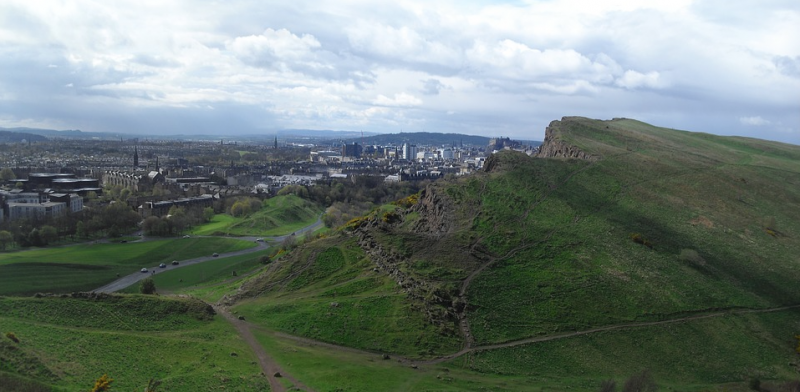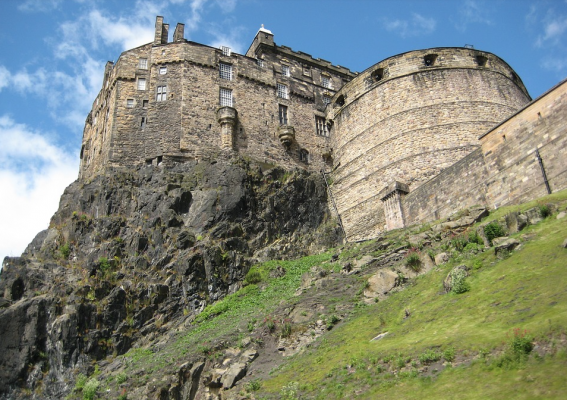
Strange moments in Edinburgh’s history: the coffins in the cliff!

Scotland’s capital is rich with fascinating historical tales, some of them more surprising than others
Edinburgh boasts some of the most incredible stories in British history, but few are as baffling as the story of the seventeen miniature coffins discovered on Arthur’s Seat.
The mystery was discovered towards the end of June in 1836 when a group of boys travelled to the north-eastern slopes of Arthur’s Seat on a rabbit hunt. But what they found was much more engrossing.
Secluded on the hill, the boys discovered a small cave hidden behind three slabs of slate. Inside this cave were seventeen miniature coffins. Each coffin contained a carefully carved figurine, and to this day questions are asked about the coffin… Who created them? What do they represent? Who placed them at Arthur’s Seat, and why? And did they ever want them to be discovered?
It’s time to try and unravel this mystery.
The mystery of the mini coffins
Arthur’s Seat is well known for its weird history and mythology. Not only is it often believed to be the site of the fabled city of Camelot, but it’s also rumoured to have once been a ferocious dragon that terrorised humans and stole their livestock to feed on (before it grew too fat and fell into an eternal slumber, of course).
But surely the most baffling true story to come from the Seat is that of the coffin discovery – largely because there is absolutely no context or explanation. The coffins were found arranged in three tiers: two tiers of eight with one single coffin atop them. Each coffin is only 95mm long, and contained a beautifully carved figure dressed in custom-made clothes. The story is so fascinating that even legendary crime writer Ian Rankin tackled the subject in his 2001 thriller The Falls.
The theories
Once they were discovered, the publications of the time had several theories about why the coffins were there. The first paper to report on the curious find was The Scotsman, which on the 16th July 1836 shared their view of “Satanic spell-manufactory!”
They said: “Our own opinion would be – had we not some years ago abjured witchcraft and demonology – that there are still some of the weird sisters hovering about Mushat’s Cairn [sic] or the Windy Gowl, who retain their ancient power to work the spells of death by entombing the likenesses of those they wish to destroy.” Yes, the Scotsman jumped straight to voodoo dolls as the likeliest explanation.
A month later, the Edinburgh Evening Post suggested the coffins may be the result of “an ancient custom which prevailed in Saxony, of burying in effigy departed friends who had died in a distinct land.”
Around the same time, The Caledonian Mercury stated that “we have also heard of another superstition which exists among some sailors in this country, that they enjoined their wives on parting to give them ‘Christian burial’ in an effigy if they happened to be lost at sea.”
Although these theories of superstitious burial customs are more likely than full-blown witchcraft, they still don’t account for why there were so many coffins.
Flash forward a few years to 1901 when eight of the coffins had been passed on to the Museum of the Society of Antiquities of Scotland and then onto National Museums Scotland. According to the Scotsman, several of the coffins were destroyed by the boys (which may account for the missing nine), and the Society concluded that they were most likely there as some form of “honorific burial.”
Mystery solved? Far from it.
In 1906, The Scotsman published another strange story about the mini coffins. According to the paper, a lady living in Edinburgh had informed them that her father (referred to as ‘Mr B’) had sometimes been visited at his business by a “daft man”. This man had once entered his shop and drawn a picture of three small coffins with the dates 1837, 1838 and 1840 written underneath them, and handed it to Mr B.
Following this, explained the paper, a near relative of Mr B’s died in 1837. Then, a year later, Mr B’s cousin died, and in 1840 his own brother died. The Scotsman went on to claim that “after the funeral, the daft deaf mute appeared again, walked into Mr B’s office and, ‘glowering’ at him. vanished never to return.”
Coincidence? Complete fabrication? Or another element to the mystery?
What does the evidence tell us?
In the 1990s, the coffins were finally analysed in further detail by Professor Samuel Menefee and Dr Allen Simpson, Visiting Fellows at the School of Scottish Studies at the University of Edinburgh. They discovered several key pieces of information about the items.
According to their findings, the figures all appear to be made by hand, but it’s possible that they were crafted by two different people. They also found evidence that some of the materials and tools used (such as wood, nails, iron embellishment and a sharp, hooked knife) suggest the creator may have been a shoe maker.
Menefee and Simpson also found that the figures seemed to form a set of toy soldiers originally, and due to the fact that their eyes are open it’s unlikely that they were initially designed as corpses. Some of them are missing their arms, possibly so that they would fit inside the coffins, and the clothes they’re wearing date back to early 1830s style. This means they’re unlikely to have lain buried for any more than six years.
This tells us when they were buried and possibly where they came from, but to get a better idea of why, we might need to step back in time.
Is it all down to Burke and Hare?
Few people in Edinburgh haven’t heard of the gruesome duo, Burke and Hare, at least in passing. (If you are one of the few, check out our dedicated post here.) In short, the pair were responsible for a grizzly crime spree that started off as graverobbing in order to sell bodies to researching doctors, and ended with them cutting out the middleman and murdering sixteen people over the course of 10 months. Eventually Hare turned witness and Burke was charged with murder and hanged on 28th January 1829.
So what does this have to do with the Seat’s mysterious coffins? All in all, there were seventeen fatalities in the Burke and Hare story — the same number of coffins found just a few short years after the scandal. Could it be that the figures were placed there to represent the deaths in place of a proper burial? Some people think so. We’ll never know for sure, but it’s an interesting theory.
The eighteenth coffin!
You might be thinking: but this all happened so long ago, surely there’s nothing new to consider all these years later? Well, you’d be wrong.
In December 2014, the National Museum Scotland received a package containing a stunningly-crafted replica of one of the coffins — mysteriously titled ‘XVIII’ (or ‘18’, to signify another addition to the collection).
Attached to the package containing the replica was a note, one which quoted the conclusion of Robert Louis Stevenson’s creepy short story ‘The Body Snatcher’ (1884), which itself uses Burke and Hare as its inspiration.
Who sent this final coffin? What does it mean? We may never know, but one thing is for sure: Edinburgh is never short of fantastic things to discover.
There are no surprises when looking for a stunning city apartment with Quartermile
Be a part of city with a rich and colourful history when you make the move to Quartermile. You can arrange a viewing of our luxury apartments by calling us on 0845 000 2525 or emailing This email address is being protected from spambots. You need JavaScript enabled to view it. .



